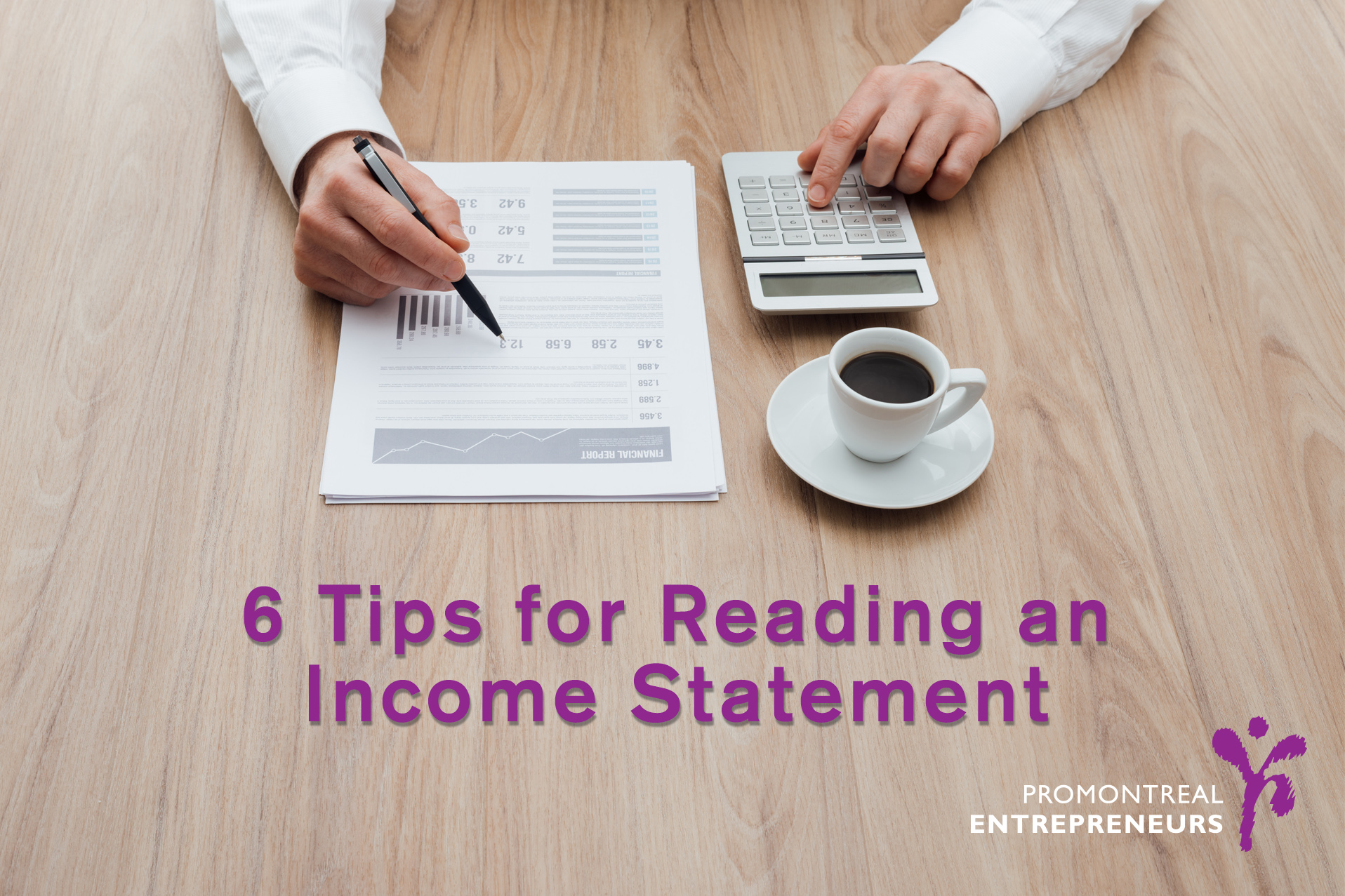The income statement is one of three financial statements that you need to become familiar with (the other two are balance sheet and cash flow statement). Understanding an income statement is essential in order to analyze the profitability and future growth of your business however reading an income statement can be intimidating to many people. Especially, if you’re at the early stage of starting your first business. To make the process slightly easier for you, here are 6 tips you should consider while looking over any income statement. It may not be as difficult or as confusing as you think it is.
1. Every income statement follows a simple formula
There is one formula that every single income statements follows:
Revenue- Expenses= Profit.
2. Income statements cover a period of time
The income statement will inform you of the amount your business has made over some time. usually, The statement will represent how much was made over a month, a quarter or a year. The “year-to-date” reflects business activity since January 1 to the present date (usually end of month).
3. Multiple names for one item cause complexity
Don’t let the financial jargon throw you off. Confusion can stem from the vocabulary used in in statements. People can use different terms to describe the same things. For instance, the words “sales” and “income” can be used interchangeably, as opposed to revenue. The term “profit” can be used instead of “net income”. “Expenses” are sometimes called “net income”.
4. The breakdown
Often times, expenses are split into multiple parts. Furthermore, profit is calculated at interim levels. For example, expenses will often be broken down into revenues, cost of goods sold, gross margin, selling, general and administrative (SG&A), and profit. Cost of goods sold are costs directly related to the products sold. Materials bought to make a product fits within this category. SG&A are costs not directly related to the making of the sold good. For example, salaries and office supplies are calculated for this.
5. Gross margin percent should be relatively constant
Gross margin is revenues less cost of goods sold. Also referred to as gross profit, gross margin is the money you receive from the products and services you sell, minus what it cost you to deliver them. It is essential because that the cost of goods sold move with revenue. The gross margin percentage is your gross margin divided by revenue. It should remain relatively constant over time. Any dramatic change with this regard should be seen as a red flag.
6. Dollars spent on SG&A should be relatively constant
Any significant and abrupt change in SG&A should be considered as alarming. It should remain constant overtime, and all dramatic and unjustifiable change should be looked into.
Understanding how to read an income statement is important, as it summarizes the overall financial health of your business. Not only is it simple once broken down, there are also many tools available online for you to deepen your knowledge on the matter.
 Email This Post
Email This Post



